- The water behind this flume wall is seven feet deep. Directly south of the mill, a water control structure regulates the depth of the channel that flows into this area.
- Two turbine water wheels are located behind the flume wall. Both turbines are submerged beneath the water. When gates located all around the turbine open, water begins to drain through the turbine.
The draining water turns a horizontal wheel within the turbine. This rotation provides power to the mill. - Connected to each turbine is a drive shaft. The function of the shaft is to transfer power—the turning motion—from the turbine to the other equipment in the mill. The shaft of the Leffel turbine runs all the way up to the 3rd floor, while the shaft for the New American turbine only runs to the 2nd floor. Connected to the shafts on the ceiling of the flume are gears that transfer power to grinding stones (located on the main floor).
- These double columns are grain elevator legs. Inside is a belt with bucket on it. Grain is unloaded in the driveway of the mill, falls into the boot of the outside receiving elevator leg, and is carried to the top of the mill to be cleaned and stored.
- This display area contains various types of milling equipment—some used originally in the mill, and some used in a sawmill previously built on this property.
- This old toilet was, at one time, an acceptable and convenient way to dispose of waste.
Basement
Main Floor
These are the grinding stone units. Along with the two stones, the units feature a funnel-shaped hopper for holding quantities of grain, a grain feeder chute, a metal vibrator shaft to regulate the quantity and speed of grain flowing into the hole at the center of the stone, and a wooden tub to corral the flour.
As the top stone (called the “runner stone”) turns, grain is fed and ground to a texture controlled by the distance between the two stones, and forced down the flour chute at the front of each stone. The stones must always have grain between them to prevent them from touching each other, as this would destroy the intricate grooving on their flat surfaces and generate heat that could kill nutrients in the flour. The stones are set to turn by metal wheels located in front of each tub, which open the gates around the turbines and allow water to enter. Speed is controlled by the amount of water admitted.
- Number 1 is a 42-inch French buhr stone—one of the five sets of stones brought to Bonneyville in 1836.
- Number 2 is a 42-inch granite stone, installed during the restoration project.
- Behind the grinding stone tubs are two vertical drive shafts, which transfer power from the turbines to the grinding stones and other machinery (on the 2nd and 3rd floors).
- These chutes bring the grain from the two 50-bushel bins upstairs (on the 2nd floor) down to the grinding stone hoppers.
- These downspouts from the buckwheat sifter bring buckwheat flour down into the bin and drop the outer hulls into a bag. The buckwheat hulls are inedible.
- This is a conveyor. The conveyor transports un-sifted corn meal to a downspout on the 2nd floor. The meal then enters the downspout and drops into the cornmeal sifter.
- This cornmeal sifter separates the cornmeal into three separate containers. The sifter contains a screen. As the meal passes over the screen, the larger pieces separate from the finer pieces.
Second Floor
- These two line shafts furnish power to the equipment on this floor.
- This buckwheat sifter separates the hulls from the flour. The flour falls into a bin on the main floor through the left (east) downspout, and the hulls are collected in a bag after falling through the right (west) downspout.
- These main drive shafts transfer power from the turbine to the corn processing system and to the buckwheat leg and sifter.
- These elevator legs transfer grain after it has been cleaned to the pair of 50-bushel bins above the stones (on the 2nd floor).
- These buckwheat flour legs carry the ground buckwheat from the stones to the buckwheat sifter.
- This is the top of the corn conveyor, where ground meal heads back down to the main floor to be sifted. A belt connects it to the main drive shaft in order to operate both sifter and conveyor on this same floor.
- These two 50-bushel bins allow us to drop grain directly into the grain hoppers above the stones. They provide storage space in addition to six large bins located on the east side on the 3rd floor.
- This hopper scale bin is used for both weighing and storing grain.
Third Floor
- This horizontal line shaft provides power to equipment on the third floor. The shaft has a series of pulleys located at strategic points. From these points, flat circular belts transfer power from the shaft to appropriate equipment. The line shaft itself gets its power from the main vertical drive shaft with similar pulleys and belts.
- This grain cleaner uses two screens and air to sort grain. The top screen allows the grain and small particles to fall through, while larger debris rides on top and falls off the end of the screen to separate. On the bottom screen, grain rides on top, while small weed seeds and debris fall though.
At the end of the bottom screen, a blower sucks the lightweight material off the flow of grain and separates it into a bag. - This main drive shaft transfers power from the turbine to the legs and cleaner on this floor.
These are the receiving elevator legs, which carry grain to the cleaner and transport it into bins located on the east side of the mill. - This block and wooden pulley was used as an early means of elevating grain and equipment by hand or water power. A rope from the 3rd floor would run through the pulley to either the 2nd or 1st floor.
- The old wooden shaft and pulley system overhead with the throw-out lever was once used as sifter shaft, and later to hoist items from the main floor. By running a rope through the wooden block (#5) and attaching it to this shaft, and allowing the shaft to wind the rope around, our predecessors could raise an item to either the 2nd or 3rd floor. Pulling down the throw-out level would to stop the rope. Then, the shaft pulley would be released from the power belt and the item would be released from the rope.
- The grey-colored grain elevator leg carries clean grain up and discharges it into our round 50-bushel storage bins.


